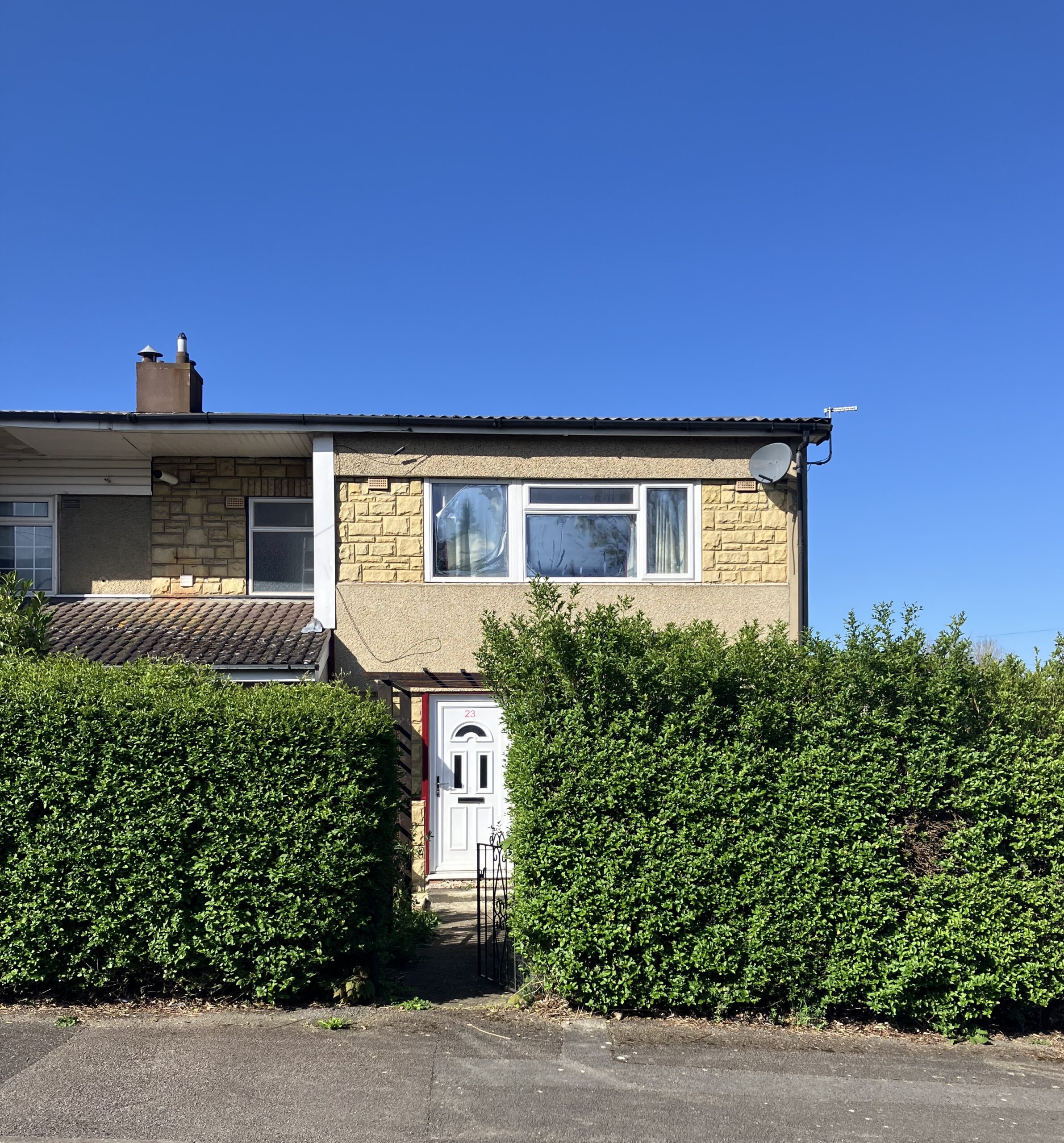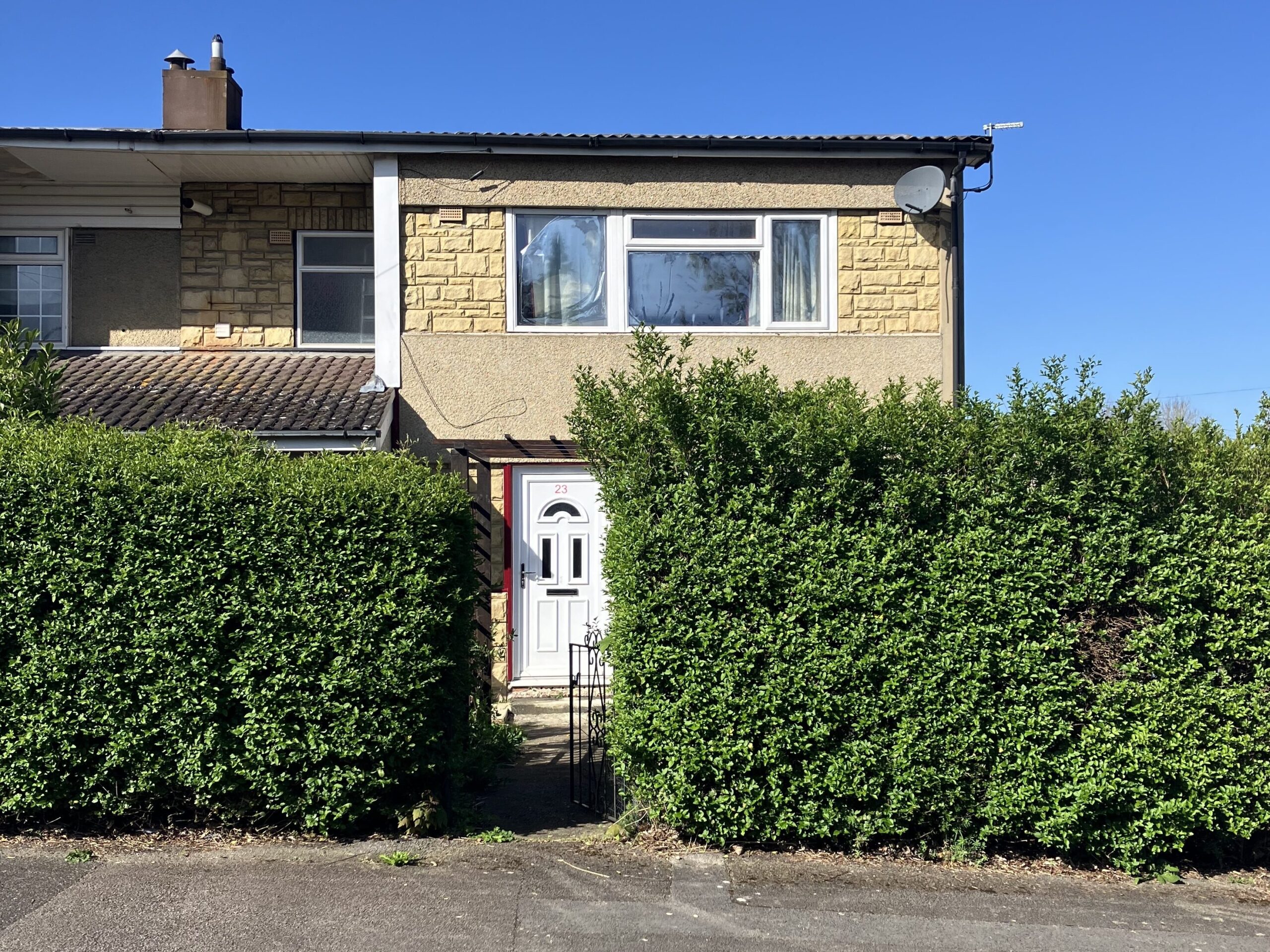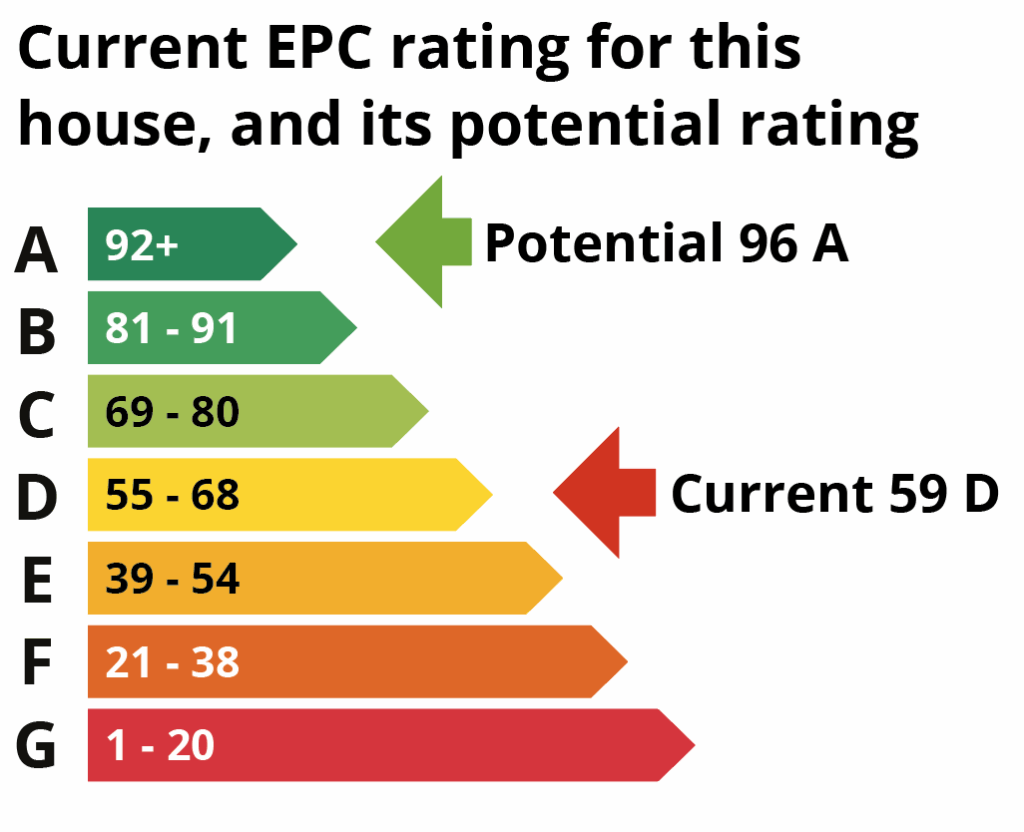
1950s semi-detached home
Could your home be made warmer, cheaper to run, and better for the planet? See what’s possible when you take a whole-home approach to planning energy upgrades.
What’s the potential of a home like this?
This 1950s steel-framed “Howard House” in Rose Hill, Oxford, is typical of a type built after the war. With steel-frame walls and cement panel infill, suspended timber floors, and a mix of flat and low-pitched roofs, it was draughty, hard to heat, and expensive to run.

The owners were concerned about rising energy bills, damp in the bathroom, and cold spots around windows and floors. By commissioning a Whole House Plan, they were able to see the impact of measures such as insulation, ventilation, new glazing, and renewable energy.
Here’s what the plan revealed:
| Carbon emissions could be cut by over 90% |
| The EPC rating could rise from 59 D to 96 A |
| Annual fuel bills could drop from around £1,883 to £338 |
You don’t have to carry out every measure at once. The Whole House Plan gives you a roadmap so you can make improvements in your own time, at your own pace, and within your budget.

“This house is cold. I could spend a lot on heating, but that’s not good. We all want to reduce gas emissions in the world. Before considering alternative heating, you must improve insulation. The biggest difference will be made with external wall insulation.”
Mark, Rose Hill, Oxford
Where this home stands now
House profile
| EPC rating | Current 59 D > Potential 96 A |
| Type | Semi-detached |
| Built | 1950s (steel-framed “Howard House”) |
| Location | Rose Hill, Oxford |
| Occupancy | Owner-occupied |
| Bedrooms | 3 |
| Floor area | 100m² |
| Walls | Steel-frame with cement panel infill |
| Floors | Suspended timber |
| Roof | Low-pitched steel frame with loft, plus flat roof section |
| Windows | uPVC double glazed |
| Annual energy use | 22,400 kWh (224 kWh/m²) |
| Carbon emissions | 4.7 tonnes CO2/year |
The EPC rating: now vs potential

An EPC rates your home’s energy efficiency – from A (best) to G (worst). A higher score can mean lower bills, but it doesn’t guarantee comfort. Whole-home upgrades help bridge that gap.
Long-term comfort, short-term disruption
| Key to tables: | Low impact: • | High impact: •••••• |
| Minor measures | Comfort & health | Disruption |
|---|---|---|
| Low energy lighting | ● | ● |
| Insulate and draught-proof loft hatch | ●●●● | ● |
| Insulate sloping ceiling of bathroom extension | ●●●● | ●●● |
| Insulate flat roof of utility extension | ●●●● | ●● |
| Increase loft insulation to 300mm | ●●●● | ●● |
| New insulated front door | ●●●●● | ●● |
| Ventilation improvements | ●●●●● | ●● |
| Major measures | Comfort & health | Disruption |
|---|---|---|
| Suspended timber floor insulation (using robot) | ●●●●● | ●● |
| External wall insulation | ●●●●● | ●●● |
| New triple glazed uPVC windows | ●●●●●● | ●●●● |
| Air Source Heat Pump | ●●●●●● | ●●●● |
| Measure | Comfort & health | Disruption |
|---|---|---|
| Solar PV | ● | ●● |
Expert tip

“For this system-built house, we’d recommend external wall insulation as the most effective method to make it warmer because much of the heat is lost through the steel-framed walls.
The hallway is particularly cold, so we’d recommend replacing the front door with a new insulated, draught-proofed one and making sure it’s properly installed.”
Geordie Stewart, Scheme Manager
The difference each step could make
These figures show how each recommended measure could affect the home’s EPC rating, energy bills, and carbon emissions – if installed in the order shown. They’re based on a full Whole House Plan tailored to this property.
| Measure | Est. cost | EPC | Fuel bill | CO₂/year |
|---|---|---|---|---|
| Where you are now | – | 59 D | £1,883 | 4.66 t |
| Loft insulation to 300mm | £1.5k–£2k | 60 D | £1,850 | 4.57 t |
| Suspended timber floor insulation (robot) | £4k–£5.5k | 61 D | £1,765 | 4.32 t |
| Flat roof insulation (utility extension) | £3k–£5k | 62 D | £1,737 | 4.24 t |
| External wall insulation | £23k–£28k | 74 C | £1,155 | 2.59 t |
| Ventilation improvements | £2.5k–£3k | 74 C | £1,155 | 2.59 t |
| Insulate sloping ceiling of bathroom extension | £1.25k–£2.5k | 75 C | £1,107 | 2.45 t |
| Three new insulated doors | £6k–£9k | 75 C | £1,072 | 2.35 t |
| Triple-glazed windows | £14k–£17k | 77 C | £979 | 2.09 t |
| Air source heat pump (with enhanced radiators + tank) | £13.5k–£17.5k | 80 C | £994 | 0.47 t |
| Solar PV (4 kWp) | £5.5k–£7.5k | 96 A | £338 | 0.04 t |
Boost your EPC rating
Installing a single major system like a heat pump or solar panels can still make a big difference. These examples show how individual upgrades could shift the home’s EPC and reduce carbon emissions – even before doing everything else.
| Upgrade option | EPC rating | Fuel bill | CO₂ emissions |
|---|---|---|---|
| Just solar PV | 89 B | £527 | 2.16 t |
| Just heat pump | 78 C | £1,137 | 0.54 t |
| Solar + heat pump | 93 A | £477 | 0.11 t |
Expert tip

“These 1950s houses are known for containing asbestos within their structural framework due to the period they were constructed.
Asbestos testing and specialist removal may need to be factored into the cost and sequencing of the improvements.”
Natasha Ginks, Retrofit Coordinator
Wondering what’s right for your home?
A Whole House Plan gives you expert, independent advice on the best steps to take – and in what order – so every upgrade really works.
Don’t put it off another year. Take the first step with a free consultation. Our team of experienced Retrofit Advisers will listen to your goals, help you understand what’s possible, and outline the best next steps – no pressure, no obligation.
Smarter home upgrades. Backed by trusted retrofit expertise.

A partnership project
A House Like Mine is an Oxford City Council initiative, delivered as part of the Zero Carbon Oxford Partnership (ZCOP) in collaboration with Cosy Homes Oxfordshire. The idea was first developed through case studies in Charlbury, and has since been expanded to show what’s possible for homes across Oxford and Oxfordshire.
It’s designed to help you take the first step towards making your home cosy, energy-efficient, and ready for the future. Step by step.
A House Like Mine was funded by the MCS Foundation, Oxfordshire County Council, Oxford City Council, and Lucy Group. The case studies are licensed under a Creative Commons BY-NC-ND 4.0 licence (creativecommons.org).

Prefer a PDF version?
Download a shareable PDF of this case study – perfect for your community group, local class, or anyone curious about improving home energy efficiency.
We’re making this resource freely available to raise awareness of how retrofitting – upgrading your home to use less energy and stay comfortable year-round – can make a real difference.
Click here to download the PDF
